


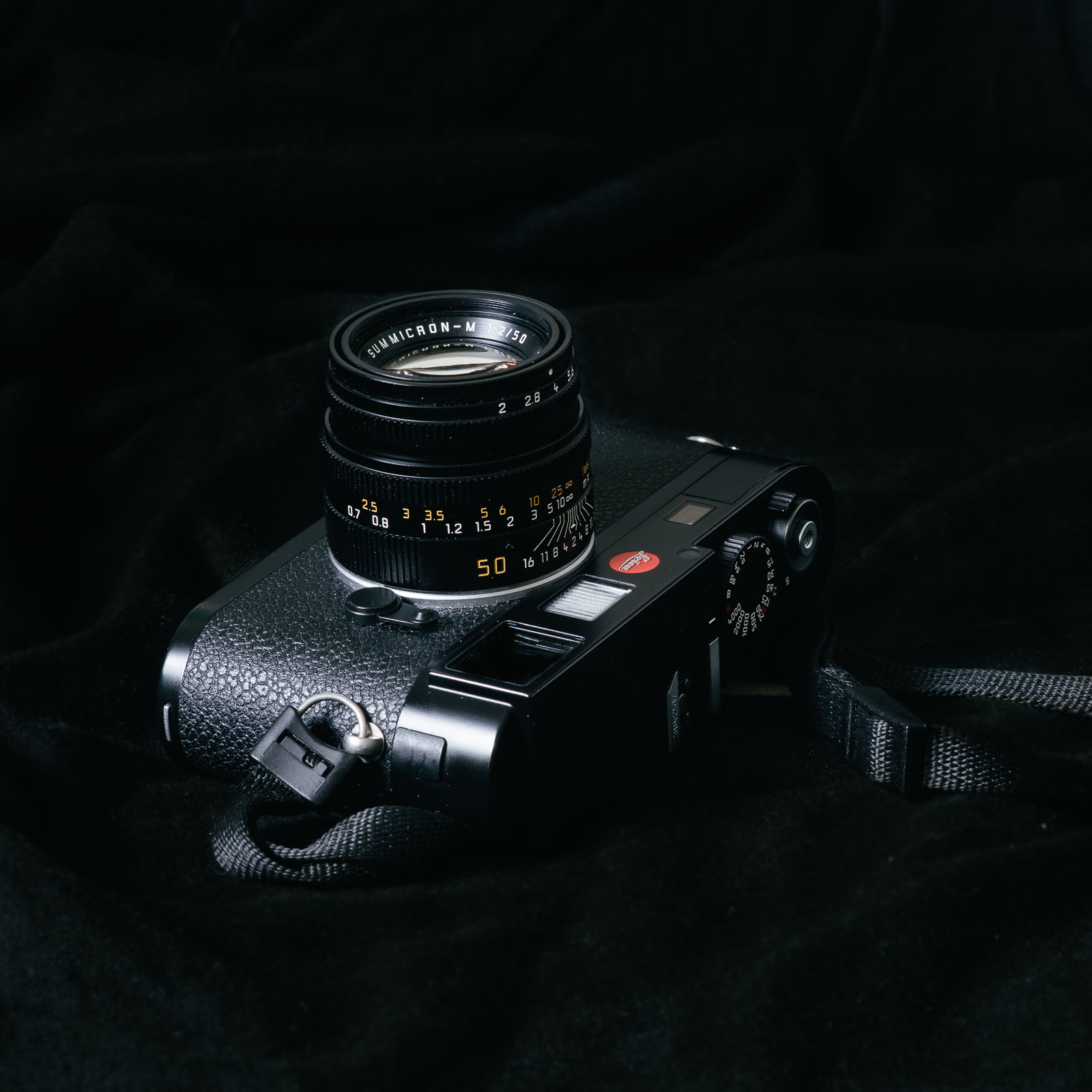
The Leica Summicron 50 is a classic normal lens for Leica M-mount. Its flexible focal length, fairly large aperture, high performance, compact size and reasonable price makes this one of the most popular Leica lenses. It’s a compact lens for its specifications, but dense and heavy for its size, especially compared to most AF lenses.
Leica has been making M-mount Summicron 50s since the 1950s, which means that there are a number of different versions available on the used market. This article is about what’s commonly referred to as the fifth version – V, introduced in 1994. There’s also a sixth version being sold in parallel to this lens, called the APO-Summicron 50 ASPH that much more expensive due to being much more complex and highly corrected. Worth noting is that the preceding version IV, produced between 1979–1994, is supposedly optically identical to this lens, however coatings tend to be improved in more recent lenses.




This is a 50mm lens – a slightly long normal. Summicron is the Leica designation for an f/2 lens, meaning that this lens has a 25mm effective aperture. As all M-mount lenses, it’s manual focus only. It’s a variation on the classical double-gauss design.


Leica have become famous for their high level of craftsmanship. The Summicron 50 is no exception.
The lens is impressively small considering its specifications, extending just over 4cm from the mount. Even compared to other M-mount lenses it’s small to moderately sized. Compared to SLR lenses, it’s positively tiny.
Construction and materials are both top notch – Leica lenses are generally built to last and their modern lenses in particular, are in a league of their own. All moveable parts work with impeccable precision.
Black and silver versions of the lens were originally sold, but the silver seems to be discontinued. The black lens is made of anodised aluminum resulting in lower weight than the silver version made of brass. The black version is more prone to showing scuffing and wear.
Lens markings are engraved and painted in Leicas very pretty, Microgramma-like, square font. On the black version of the lens the metric scale is painted white and the imperial one is yellow, both clearly visible even in low light. There's a clear and usable depth of field scale available. Full aperture stops are marked with corresponding numbers, half-stops are unmarked.
The integrated hood slides out smoothly without play.
The aperture consists of eight blades. Slightly fewer than some peers with less refined sunstars as a result. Bokeh should theoretically also suffer from the fewer blades but in practice it's not an issue.

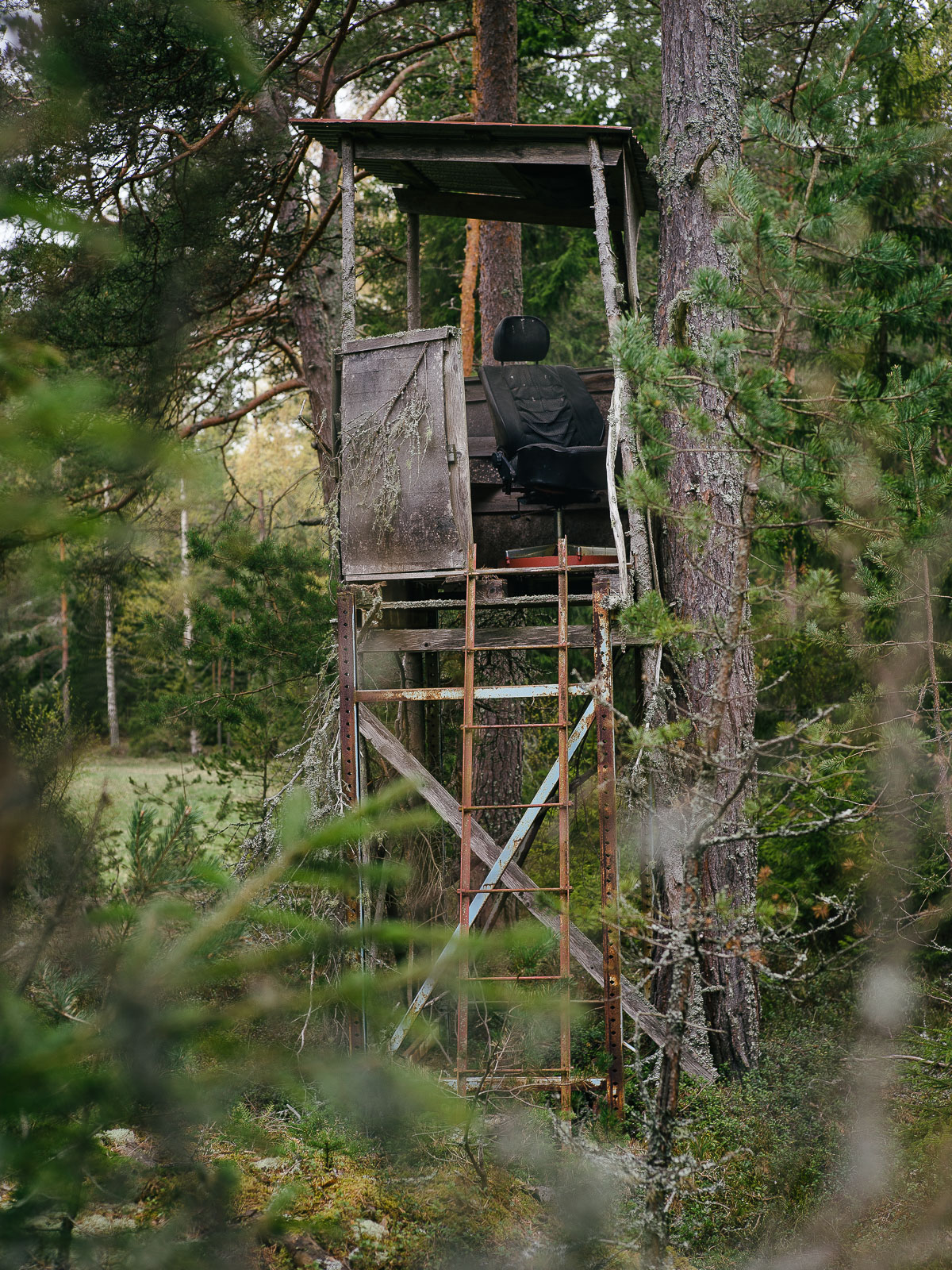

The ergonomics are average. The focussing is very smooth and moves with a light touch. Focus travel is around 120°. The aperture ring has half stop clicks and is very well balanced, moving easily but practically never inadvertently.
I do find that the focus and aperture rings are too similar and too close together – on occasion I grab the wrong one. I also prefer having a focus tab on my rangefinder lenses – missing on this version, but available on versions IV and VI.
The slide out hood is excellent - always available with a simple pull, moving away even easier - it never gets in the way.

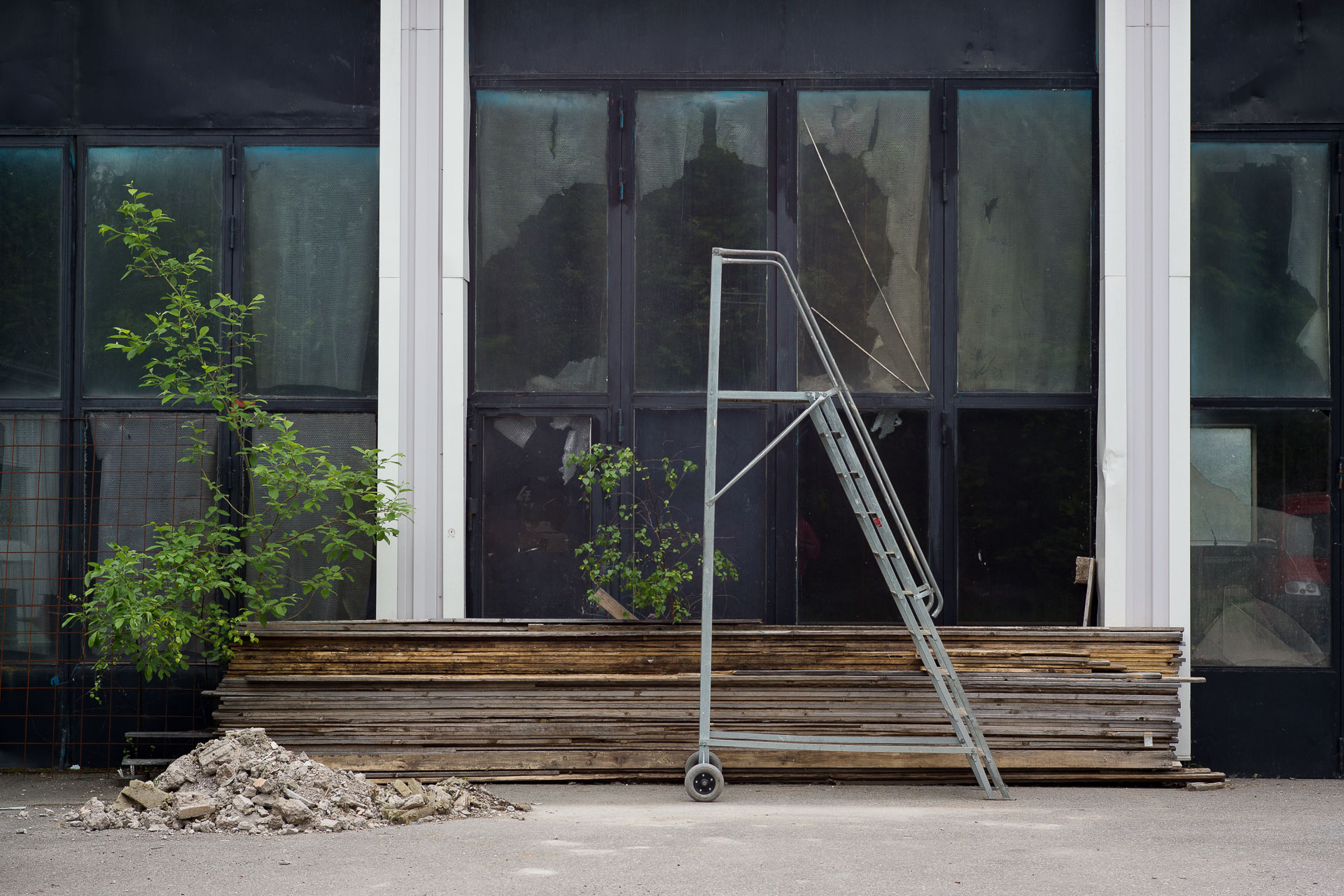
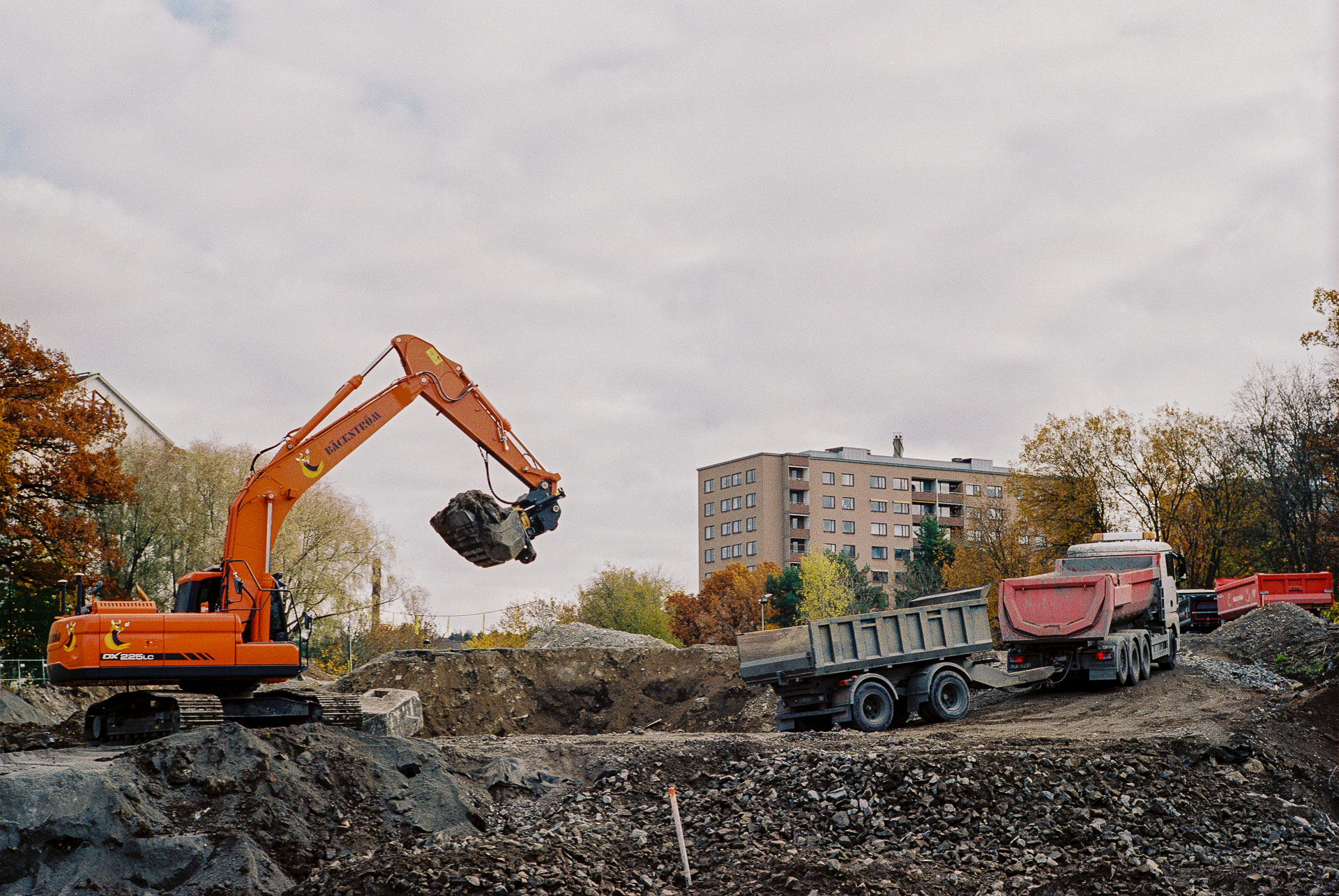
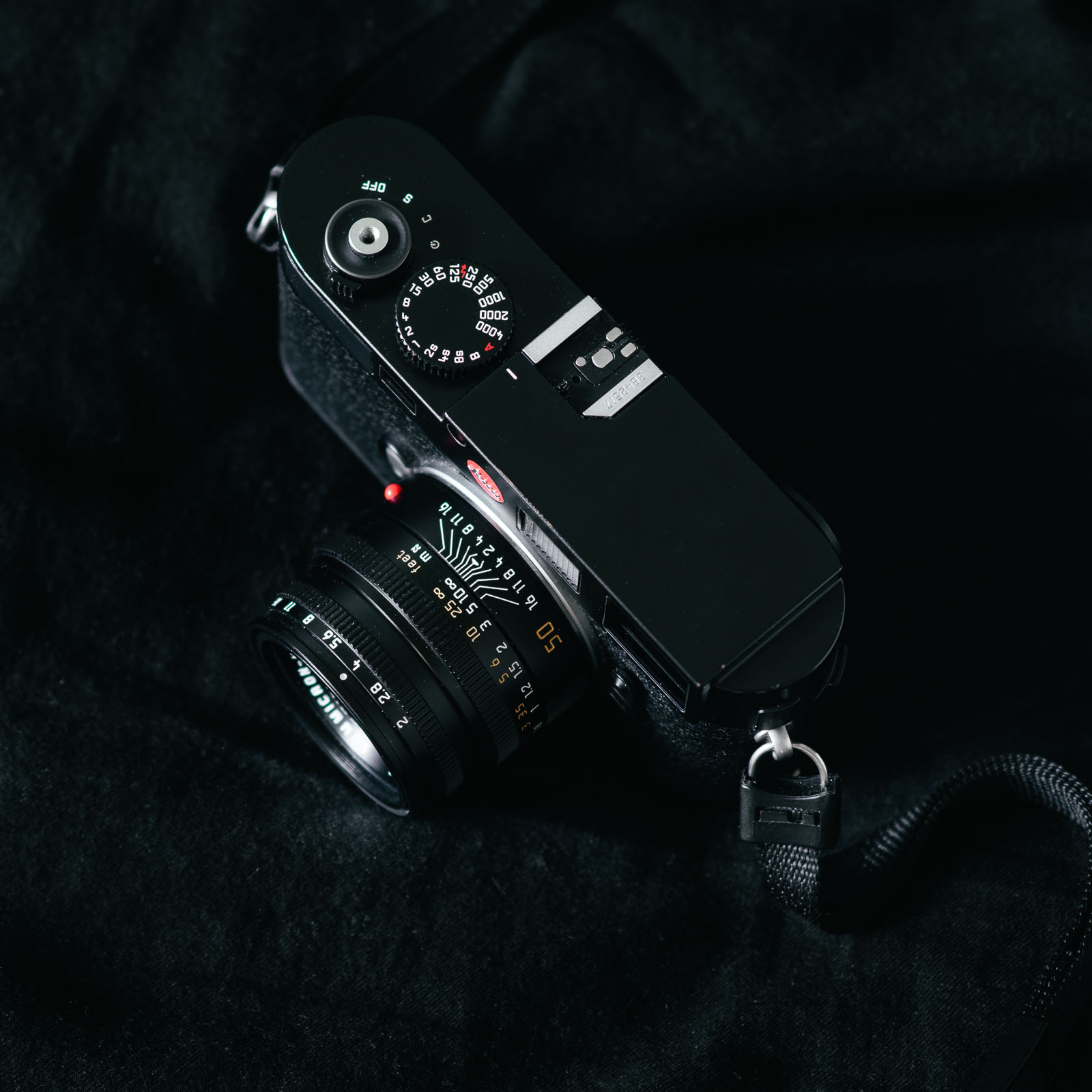
There is an abundance of 50mm lenses to choose from. The Summicron 50 is noteworthy due to its appealing rendering and high level of performance in a light and compact housing.
Compared to other lenses using the double-gauss design, which includes most 50mm lenses ever made, the Summicron 50 generally performs on a much higher level. The design has been stretched to its absolute limits during more than a century of refinements and the Summicron 50 is one of the best performing lenses in this extensive family. Faster alternatives generally perform on a lower level with more aberrations.
During the last decade immense efforts have been made by many manufacturers, to improve performance further by moving beyond the double-gauss design. These efforts have resulted in a number of very highly corrected lenses with far more complex designs (e.g. the 50 Summilux ASPH & Zeiss 55mm Otus). When compared to such lenses, especially up close on higher resolution cameras, the Summicron 50 is starting to show its age. Probably the reason that Leica felt compelled to introduce the more highly corrected and apochromatic version VI. On the other hand, the Summicron 50 is a far lighter, smaller and cheaper lens.
In practice, the lens rendering is well balanced and gives rarely beautiful end results. The most impressive levels of contrast is achieved at moderate frequencies, leading to an overall punch to the images but somewhat less outstanding levels at close scrutiny. There’s a calmness to the images with a distinct clarity. A rounded sharpness that is shared with many contemporary Leica lenses and loved by many.
Resolution is impressive already wide open. Close examination reveal a slightly subdued reproduction of small detail compared to benchmark lenses (on high resolution sensors). There’s slightly uneven resolution across the field with a dip in the mid field, due to trace amounts of astigmatism and related field curvature. Resolution is high in the centre, slightly lower in the mid field, picking up towards the edges and then drops again in the deep corners. Stopping down improves resolving power at f/2.8 and f/4, but f/5.6 is needed for high resolution across the frame, f/8 being spectacular.
The slightly irregular resolution is probably why reviews of the Summicron 50 tend to conclude that it’s either super sharp or that it falls a little short - both are true, depending on where you look.
The very high and even level of micro- and mid level contrast across the frame, even wide open, is very impressive. It also improves very quickly stopping down.
Micro contrast is very high - close tones are cleanly separated in a relaxed way. Wide open there’s a slight dip mid field and the edges suffer slightly. Already by f/2.8 it’s improved to extremely high levels across the frame, only the deep corners needs further stopping down.
Likewise the mid level and global contrast is very high across the frame. This gives the full frame the clarity and overall impression of sharpness mentioned earlier.
Colours are highly saturated and very clear. There’s an impressive separation between similar colour tones giving images a wide gamut and certainly among the best performers in its class.
While a 50/2 does not result in massive amounts of bokeh, there’s still plenty of subject isolation. Transitions between planes are gentle, contributing to the overall look but also results in slightly less clear separation.
Bokeh quality of the Summicron 50 is good if not quite class-leading. There’s some overcorrected spherical aberration as well as slight chromatic aberration in areas out of focus, resulting in ringed background bokeh circles with color shifts. This can give high contrast backgrounds a slightly messy bokeh. Calmer backgrounds result in more pleasing bokeh with retained texture.
Aberrations are generally well controlled. Vignetting is slight at wider f-stops, disappearing almost completely by f/4.
Flare is generally well controlled with retained contrast even in challenging light. When it fails however, it’s not subtle. Colourful ghosts with can affect large portions of the frame. Usually any major issues appear with the sun in the frame, but it’s slightly unpredictable and can ruin a shot if it shows up at the wrong time. This unpredictability makes the lens less than best in class, despite the generally good performance.
Impressively there’s almost no distortion. Also impressive is a general lack of visible fringing and chromatic aberrations, even coma is well controlled. All adding up to a calmer and more robust rendering.
The evaluation above is valid regardless of capture medium, but nuances exist and since digital is more revealing in many cases that’s the primary medium for analysis. On film the rendering of course carries over but the subtleties can be perceived slightly different.
The Summicron V does exceptionally well on colour film. The evenness across the frame and clear colour palette makes strong and clear negatives.
To my tastes this is one of the nicest rendering lenses I've shot for B&W film. The high contrast across the entire range and balanced performance translates to beautiful and subtle greyscales.
The Summicron 50 makes pleasing images look deceptively simple. The evenness across the frame and smooth sharpness results in images that require very little additional work. There’s a delicate and organic quality to the rendering that’s beautiful in a subtle way. Only the most modern, high end designs surpass the resolution of this lens, but even then few touch the overall impression of the Summicron. The susceptibility to flare is the only objective drawback.

Bokeh sample from top right corner. Wide open & high contrast; i.e. worst case scenario.


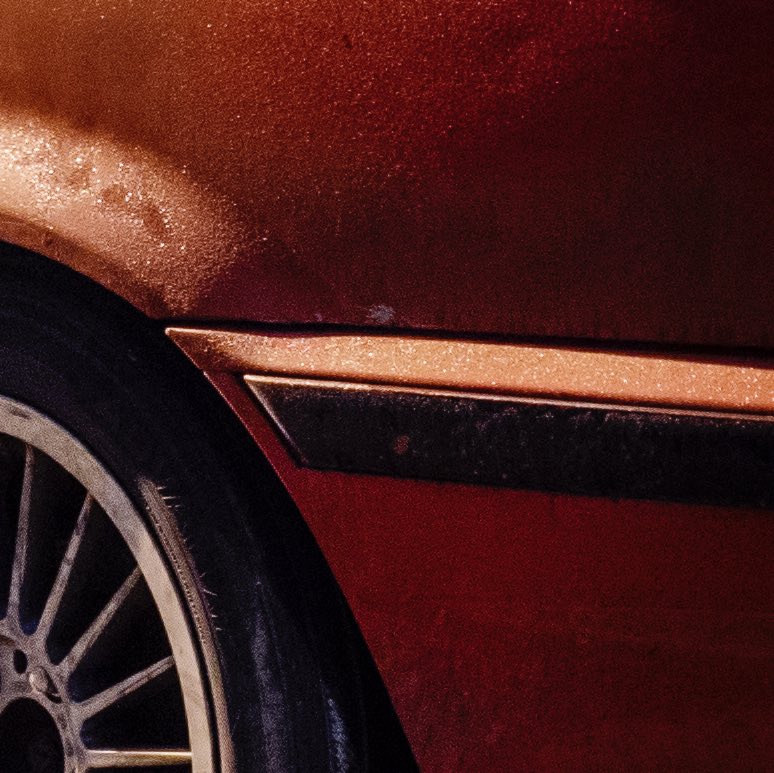
1:1 crop, boosted exposure, f/2. Note high level of micro-contrast.
Flare can be an issue when the sun is in the frame, this is probably the worst instance I've seen.

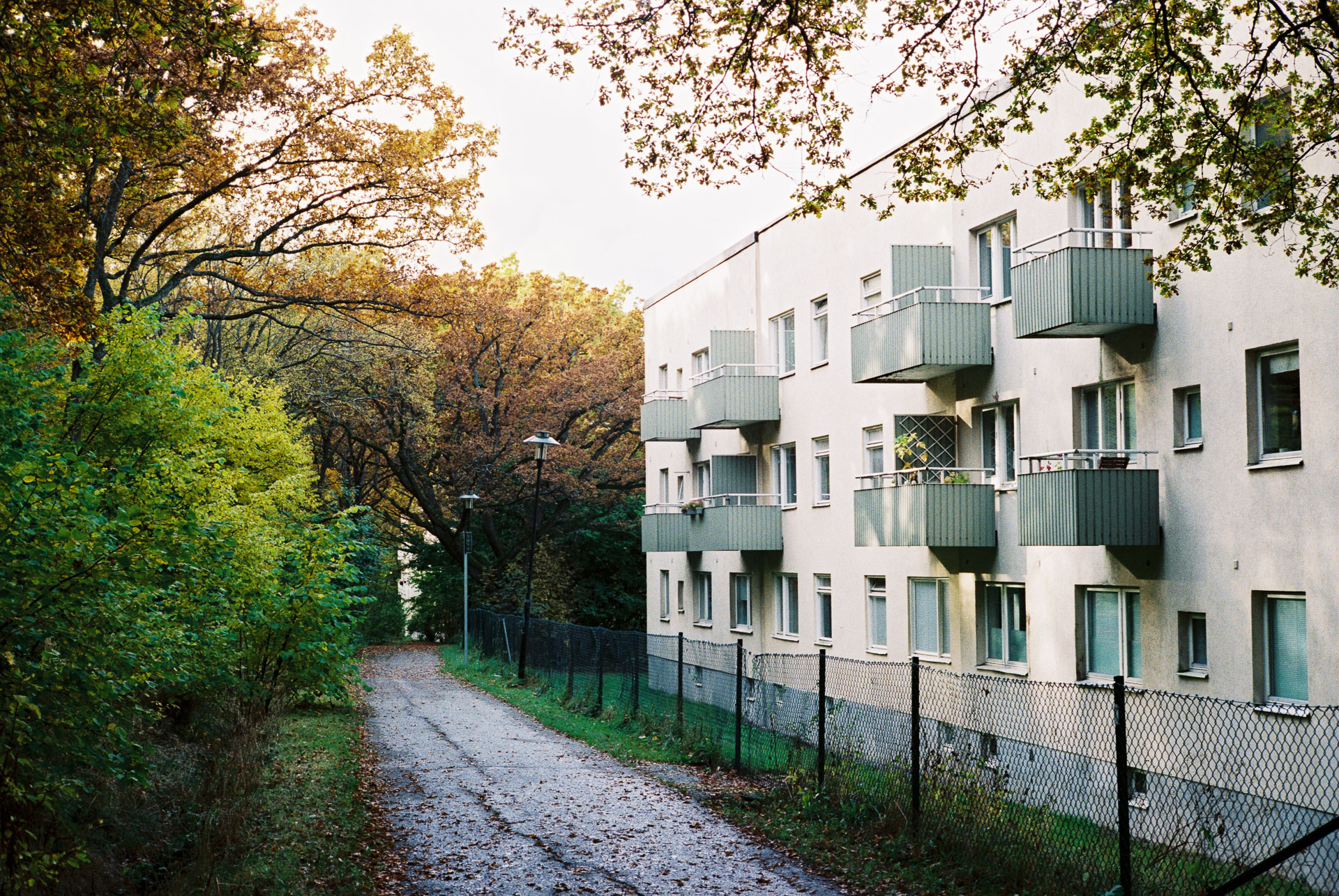
The rendering on film is equally beautiful.
I’ve had this lens for several years by now, and have used it quite a bit on different cameras. Here are some observations from using it.
I’ve previously felt that 50mm lenses are in a little bit of a no-mans-land in terms of perspective, but over time the focal length has grown on me. To me it feels like a very short tele rather than a completely balanced normal (something a 40mm lens achieves better for me). In use this long normal focal length gives a pleasant condensation of the image perspective without compromising usability in tighter quarters. It also allows images to retain more context compared to a longer lens but still giving a slight tele feel.
I especially enjoy the focal length as piece of a two lens kit – paired with something slightly wide, e.g. a 28 or 25. I often feel I could shoot a simple kit like that indefinitely.
I quite enjoyed shooting the lens on APS-C cameras too, where it behaves as a 75mm lens, giving a more pronounced long lens character.
One challenge is using the Summicron in marginal light – f/2 can feel a little limiting at 50mm. I’ve been able to get away in most situations even on cameras with relatively poor high ISO performance (M9, NEX–7, film), but it’s been pushing it. I’ve felt myself bumping in to the limits of the light gathering fairly often and an f/1.4 lens can give a bit more leeway in marginal light. On the other hand I do like the smaller size that the reasonable speed allows and as for depth of field I rarely wish for more separation than I can achieve with this lens.
I do feel somewhat frustrated with the ergonomic issues however. They could be fixed quite easily, but as it stands its not as transparent to use as a more well designed lens. I’ve considered adding an aftermarket tab which would probably improve things, but felt hesitant due to none of the solutions being exactly what I want.
The hood is a brilliant design and I wish more lenses had functionality like this one. However the lens is susceptible enough to flare that even the hood doesn’t even fix every instance – one of few unfortunate problems.
Its a bit difficult to forgive these minor issues considering the price and conservative specifications of the lens. But even then the Summicron stands out as an excellent choice.
The compact size, refined construction and smooth operation is appealing. The rendering is exceptionally refined and despite looking deceptively simple its output is unusually pretty, making it easy to fall for the lens. There are a few objective drawbacks, but most other alternatives feel like settling after using the Summicron.
Excellent. The lens balances well on the camera. Only very slight blockage of the viewfinder, even at close distances and with the lens hood extended. Framelines are easy to see, even with glasses. The rendering on film is beautiful and impressive.
Excellent. The lens balances well on the camera. Only very slight blockage of the viewfinder, even at close distances and with the lens hood extended. Framelines are easy to see, even with glasses. However the framelines are also quite conservative and can feel a little claustrophobic, accuracy also suffers at longer distances. The rendering is beautiful and impressive throughout the frame, great color, no color shifts. Resolution is more than good enough for the sensor.
Excellent. Practically no blockage of the viewfinder. Framelines are easy to see, even with glasses. Excellent rendering & color, no color shifts.
Fantastic. At 75mm it feels like a proper short tele. Great performance across the frame. No color shifts. Amazing colour. Live view focussing can result in optimal results despite slight field curvature.
Fantastic. At 75mm it feels like a proper short tele. Great performance across the frame. No color shifts. Amazing colour. Some highlight blooming, perhaps related to filter stack. Live view focussing can result in optimal results despite slight field curvature. The lens shows its age slightly as it struggles to fully resolve the sensor wide open.
Fantastic. Resolution & contrast suffers slightly in the deep corners at wider apertures and longer focal distances when compared to the M9. Live view focussing gives optimal focus accuracy despite slight field curvature, resulting in higher practical performance than the M9. Better low light performance makes the lens easier to use also in marginal light. Fantastic colour and rendering.
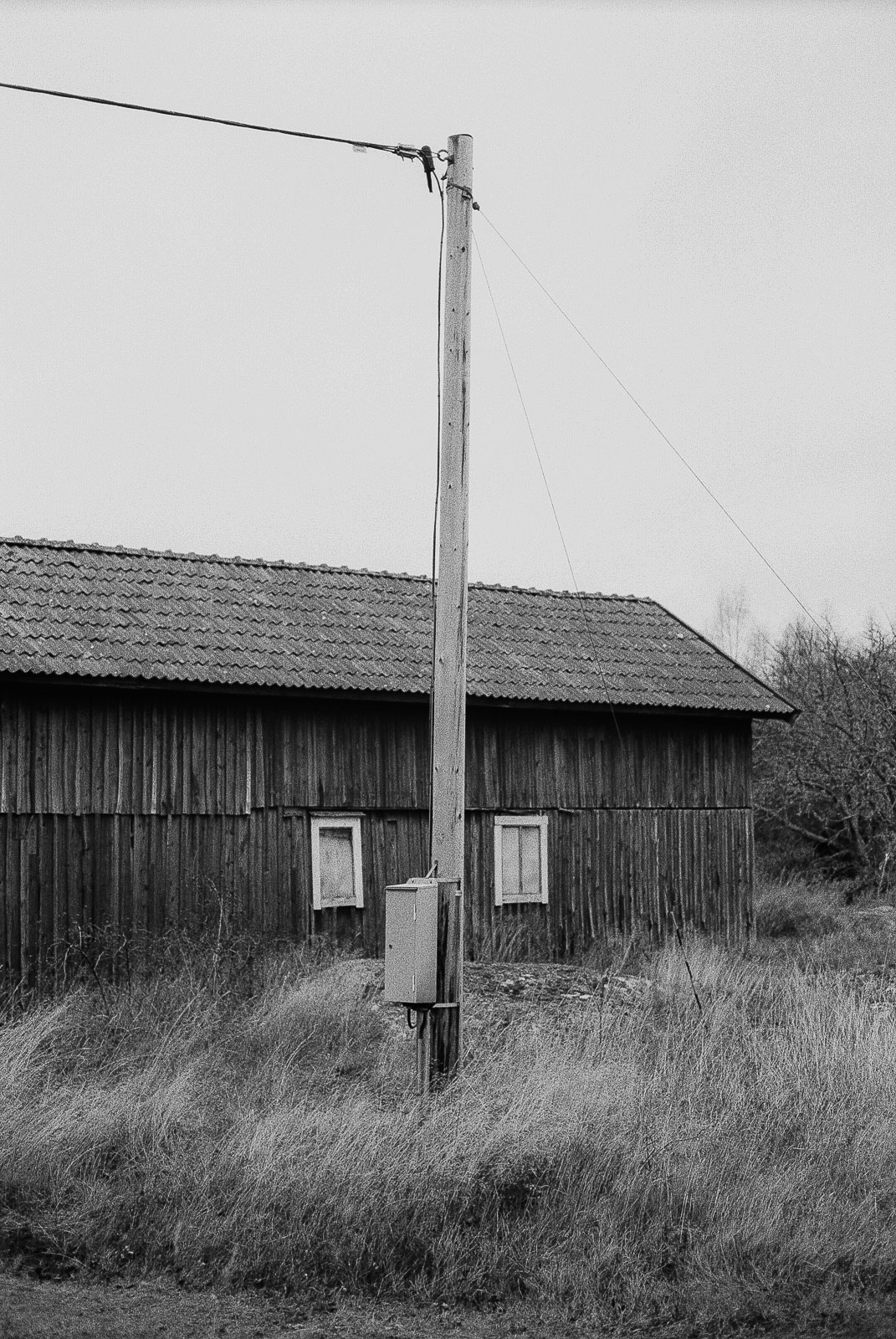


50mm is quite possibly the most common fixed focal length sold. There has been a continuous production of Leica 50’s for the better part of a century. There are scores of options available. Depending on ones priorities any one lens could be the right or wrong one, an impossibly huge decision matrix. I won’t cover this at great length, instead this is a short list of the options I feel are the most relevant. If settling for a single 50 today, I would probably go for the Zeiss 50/1.5 below.
At twice the price & 1.5 times the weight the current Summilux is not a very reasonable choice. There also seems to be some sample variation out there. Ergonomics that look perfect and being a full stop brighter are obvious advantages, but the another reason to consider this lens is the wonderful rendering. Similar to the Summicron 28, the Summilux 50 looks to balance modern performance and classic look in a unique manner.
While a bit of an unconventional choice, this much smaller and lighter lens is an interesting option. While the pure performance isn’t quite as high, the overall character is similar and stopped down the output is close to indistinguishable. It has some practical niggles, but the ergonomics are nicer and it’s also a far cheaper lens (about a third of what the 50 V usually goes for).
Full review of the Summicron-C 40
Another unconventional choice. The Nokton 40 is a lot smaller and cheaper than the Summicron 50 despite offering far better ergonomics as well as an extra aperture stop. Pure performance is not at quite the same high level, but under most conditions results are similar. Stopped down results are pretty much indistinguishable.
This new lens from Voigtländer looks nice. I’ve shot this lens’s LTM predecessor briefly and it performed admirably. The new version seems to have improved optics and coatings, resulting in higher performance. Rendering looks very appealing. Is actually lighter than the Summicron, despite being faster. Has more distortion than the Summicron. A possible downside is that colours from Voigtländer lenses generally need a bit more work than from Leica or Zeiss lenses. Ergonomics look odd.
Extremely similar in specification to the 50 Summicron, the ZM Planar is an appealing alternative. I’ve shot this quite a bit and it’s a great lens. Overall performance is as good or better than the Summicron – contrast is comparable, resolution too, but dropping off more predictably across the frame. It’s a lot less susceptible to flare. There’s a little bit more colour fringing though, which can be distracting. Ergonomics are better but construction is slightly less refined. You also lose the slide out hood. It’s slightly lighter and has 10 aperture blades instead of 8. Objectively it’s hard to recommend the Summicron, especially considering the price difference. The price to performance ratio of the Planar is simply put exceptional. Still having both I consistently gravitate towards the Summicron – to my eye it simply renders subtly more beautifully even if the difference is very slight.
Full review of the Zeiss ZM 50/2 Planar
From a pure specifications standpoint the Sonnar seems like a no-brainer against the Summicron. It’s smaller, lighter but faster and cheaper. It’s well made, has better ergonomics, is less susceptible to flare and renders even more beautifully than the Summicron. However digging a bit deeper reveals a few issues. The Sonnar is an odd lens – it’s more or less a re-release of a design from the 1930’s giving it clear strengths, but also a few equally pronounced drawbacks. Resolution is lower than on the Summicron, but the biggest issue is that focus accuracy is affected by focus shift depending on aperture. This can make the lens a bit temperamental in use. The 0.9m MFD vs 0.7m on most other contemporary lenses is also frustrating at times. Still to me its strengths outweigh these weaknesses by far and for my tastes it’s my new favourite 50mm lens. Still it’s not for everyone and the Summicron or Planar are objectively easier recommendations.
Full review of the Zeiss ZM 50/1.5 Sonnar



It’s hard to unreservedly recommend the Summicron 50 V as a great purchase. Lower priced options equal or even surpass it on an objective level. Still I find it hard to beat. I’m occasionally frustrated by some of the ergonomics and it flares more often than I’d like. However beyond that it’s practically perfect – the performance is excellent while still offering beautiful rendering. The small size, great construction and clever hood design rounds out the offering.
All photos in this review were taken by me, using Leica M4-P, M9, Sony NEX-7 & A7. Exif-data is intact. Open any image in a new window for a closer look.
This review was updated in April 2017 to reflect some new findings (shooting on film) as well as new preferences.